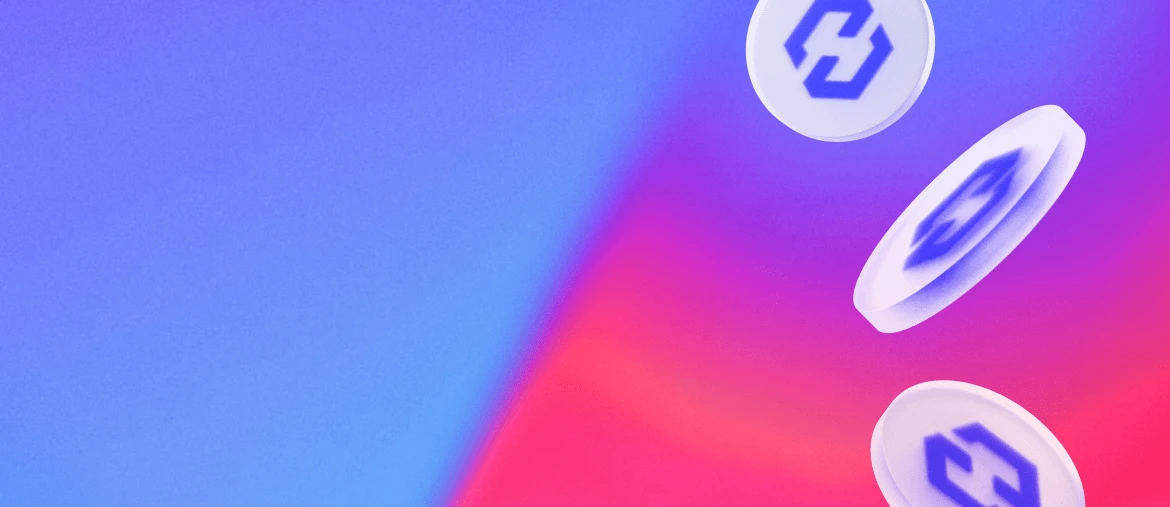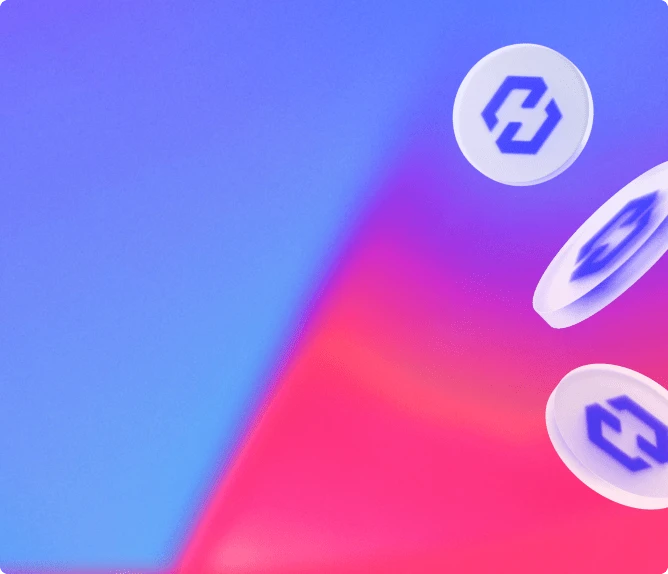Investing in crypto-assets carries risks of liquidity, volatility, and partial or total capital loss. Crypto-assets held are not covered by deposit and securities guarantee mechanisms.


Sign up for our newsletter
Partners
Coinhouse
Our accounts
Coinhouse
Coinhouse SAS with a capital of €210,000, RCS Paris 815 254 545, headquarters: 14 Avenue de l'Opéra 75001 Paris – support@coinhouse.com. Registered with the AMF for activities related to the purchase/sale of digital assets against legal tender, the exchange of digital assets for other digital assets, and the custody of digital assets for third parties under the registration number: E2020-001.
Coinhouse payment solutions
Company registered with the Paris RCS under the number 914 384 557, registered with the Prudential Control and Resolution Authority as a payment service agent under the number 727503 of the electronic money institution Treezor, headquartered at 33 Avenue de Wagram, 75017 Paris.
General conditions, disclaimers and legal documents.



Celestia is a project that started in 2019.
Initially, the blockchain was called LazyLedger and then changed its name to Celestia on June 15, 2021.
The mainnet is recent and was launched on October 31, 2023.
The main person working on the launch of blockchain is Mustafa Al-Bassam.
In particular, he has worked on the sharding technology used on Ethereum, for example.
As announced on its website, Celestia’s aim is to be the « first modular blockchain network« .
A classic monolithic blockchain like Bitcoin or Ethereum takes care of validating, storing and executing transactions.
Celestia works differently, with a modular architecture.
The blockchain separates the consensus layer from the execution layer.
In practical terms, Celestia can be seen as a blockchain foundation that simply serves to store data in an orderly fashion.
It is in this sense that the blockchain was described as « lazy » under its original name « LazyLedger ».
Each developer can then « plug in » his or her application to Celestia on a higher layer.
This layer will also take care of data validation by producing data validity proofs.
With its modular architecture, Celestia facilitates the work of developers, who no longer have to worry about the execution environment.
What’s more, they don’t have to spend time programming the consensus layer, which is provided by Celestia.
From a technical point of view, Celestia has been developed in the Cosmos environment and uses the Tendermint protocol. TAI is Celestia’s native token, used for :
Celestia’s current market capitalization exceeds $1.8 billion, putting the TIA token on the doorstep of the world’s top 50.
Buy Celestia online.
The foundations of the Celestia project were laid by Mustafa Al-Bassam while he was still studying at University College London (UCL) and preparing a PhD on the scalability of layer-0 blockchains. The white paper was published in 2019. At the time, the project was known as LazyLedger. After the release of a devnet, the Mamakitestnet was released at the end of May 2022.
If it was primarily aimed at developers, all users could participate in this experimentation.
To reward people for their involvement, tokens were distributed.
Users could participate in various tests, such as operating a node, delegating testnet tokens, managing a validator node, or sending transactions between wallets.
2023 is a pivotal year for the Celestia project.
Shortly before the release of its mainnet, the team carried out a airdrop in september 2023.
Called “Genesis Drop,” this airdrop involved the distribution of 60 million TIA tokens, representing 6% of the total supply. The goal was to allow users to stake these tokens after the official launch of the Celestia blockchain and the creation of its first block (genesis). The token distribution period began on September 27, 2023, and ended on October 17, 2023. In total, 7,579 developers and 576,653 on-chain addresses on Ethereum rollups, Cosmos Hub, and Osmosis were invited to participate in the airdrop. Unsurprisingly, the mainnet launch followed the airdrop just a few days later, on October 31, 2023. Currently, Mustafa Al-Bassam is CEO of blockchain developer Celestia Labs.
He is no stranger to start-ups, having co-founded Chainspace, a company specializing in the creation of smart contracts, which was acquired by none other than Facebook. He is also said to have been one of the founders of the hacker group LulzSec (now disbanded), known for hacking Sony, Fox, the FBI, and even the CIA.
The first major round of financing for Celestia’s development took place in March 2021.
This funding round enabled the team to raise $1.5 million.
Participants in this round included Interchain Foundation, KR1, and Binance Labs. Following this financing, several prominent advisors joined the project, such as Zaki Manian and Ethan Buchman, engineers at Cosmos, and Morgan Beller, co-founder of Diem (a Facebook project formerly known as Libra).
Another major fundraising round took place after the release of Mamaki.
On October 19, 2022, the foundation overseeing Celestia’s development announced the successful completion of a $55 million funding round.
This round was led by Bain Capital Crypto and Polychain Capital, with participation from Placeholder, Galaxy, Delphi Digital, Blockchain Capital, NFX, Protocol Labs, Figment, Maven 11, Spartan Group, Jump Crypto, and notable angel investors such as Balaji Srinivasan, Eric Wall, and Jutta Steiner.
Currently, the leadership team at Celestia consists of:
See TIA price.
Celestia’s fundamental principle is modularity, which means that Celestia breaks down the blockchain into layers of separate components. In general, the following layers can be distinguished on a blockchain:
In a classic monolithic blockchain such as Ethereum or Bitcoin, it would perform all these roles in a single layer.
In contrast, Celestia breaks down these functions into single layers.
Cette configuration offers developers greater flexibility and customization. On the other hand, to avoid managing too many activities at once, which is detrimental to scalability as is the case on Ethereum, Celestia has chosen to deal only with the following two layers:
Celestia does not handle transaction execution, which is why its developers call it the “LazyLedger” blockchain!
The Celestia blockchain works with a Proof-of-stake Proof-of-stake consensus comme c’est le cas sur Solana, Cardano ou Ethereum. Pour entrer plus dans les détails, Celestia a été développé au sein de l’écosystème Cosmos qui est un layer 0. The blockchain was developed using the Cosmos SDK module. To interact with other layers, such as the execution layer, Celestia uses Inter Blockchain Communication (IBC)..
Concrètement, cela signifie que les développeurs peuvent venir “brancher” des blockchains personnalisées directement sur la base Celestia. This has two main advantages for developers.
Firstly, they can create their blockchain using the virtual machine (and therefore the computer language) of their choice, thanks to the compatibility of the Celestia platform.
Secondly, they need only worry about creating the execution layer, since the rest is managed by Celestia. Another of Celestia’s strengths is a feature implemented by developers called Data Availability Sampling, or DAS. .
Ce concept a été créé en 2018 par Mustafa Al-Bassam.
The larger the block, the greater the computing power required to process it.
This is detrimental to decentralization (a criterion of the blockchain trilemma), since managing a node becomes more expensive and therefore fewer people can do it.
To avoid this, Celestia uses a technique known as ” erasure coding“. This is a data protection and error recovery technique that involves breaking down data into small fragments, creating redundancies (in the event of data loss) and distributing them to different locations on the network. This creates “lightweight” nodes. (light nodes), making them inexpensive to manage.
These nodes are light in the sense that they do not hold the entire transaction history of the network.
In terms of computing power, they require only 500 Mb of RAM memory and a bandwidth of 56 Kbps, for example.
These nodes perform a kind of sampling, taking small quantities of data and checking that they are present and valid in the blocks.
Once a certain quota has been reached, they create a so-called data validity proof. To put it simply, on Celestia, information is scattered across the network.
Le mécanisme de codage par effacement permet d’attester la présence de ces données et de leur validité.
TIA is Celestia’s native token.
It fulfills the classic roles of a utility token, namely :
Participate in governance by taking part in votes and submitting proposals to develop the protocol.
As with Bitcoin, the number of TIA tokens is capped.
The developers have thus foreseen that there will never be more than one one billion TIA tokens tokens on the network. Of the initial supply of TIA tokens, the breakdown was as follows:
The inflation rate (rate at which new tokens are issued) on Celestia is 8% in the first year.
Thereafter, this rate will fall by 10% each year until it reaches a floor value of 1.5%.
| Compatible wallets | Keplr, Leap wallet, TokenPocket, iToken Wallet, Binance Wallet |
| Capitalization | 1.25 billion euros |
| Consensus mechanism | POS (Proof-Of-Stake) |
| Security | Auditors : Informal Systems |
| TPS | Depends on the blockchain built on Celestia |
| Number of nodes | 100 validator nodes |
| Programming language for smart contracts | Compatible with all languages and virtual machines |
In 2022, the Celestia team launched the Modular Fellows which aims to support and mentor modular developers.
The initiative was an immediate success, with over 400 applications received.
For the first selection, 13 people (known as “modular fellows”) were chosen.
The program lasts three months and provides Modular Fellows with technical support, mentoring and a monthly stipend of $3,000 to build the project of their choice.
Après le programme, un soutien continu sera disponible pour les boursiers sous forme d’aide à la collecte de fonds et de subventions.
Modular Fellows work closely with the Celestia Labs team and a hand-picked group of Modular mentors who will help solve engineering problems and provide feedback on milestones.Modular Fellows act asproject incubator for Celestia. Over time, Celestia’s Celestia ecosystem ecosystem has grown to include more than 80 dApps in the following areas:
Another way to buy TIA coins on Coinhouse is to exchange them.
Simply click on the “Exchange” button at the top of the home page, then exchange USDC stablecoins (buy USDC) for TIA tokens.
This means that you must first have USDT stablecoins in your Coinhouse account.
Celestia is a project that breaks with the majority of blockchains currently on the market.
Unlike the classic monolithic model of Ethereum, for example, Celestia offers a modular blockchain.
Pour faire face au trilemme de la blockchain, les développeurs ont misé sur la décomposition de la blockchain en couches.
Celestia distinguishes itself from most other cryptos by separating the consensus layer from the execution layer.
Without handling transactions, this “lazy” blockchain can focus solely on key and highly energy-intensive blockchain roles, such as data storage or DA (Data Availability).
Celestia makes developers’ work much easier by providing them with a ready-to-use ready-to-use base that manages consensus.
Users can program custom blockchains and their decentralized applications by selecting their execution environment (language and virtual machine of their choice) and directly connecting it to the Celestia ecosystem.
Celestia serves as a database where validators can retrieve data when they need to verify the validity of a block.
Despite its youth, the project already enjoys a strong strong reputation and ranks in the top 100 worldwide in terms of market capitalization.
By bringing a new vision to the market, Celestia could well be the Catalyst for the advent of modular blockchains.
Share the article


Download app